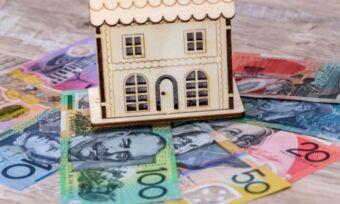NSW stamp duty abolished: Where could homebuyers put those savings?

The New South Wales state government will pause stamp duty charges for new homes under $800,000. The move could save some first home buyers more than $30,000, though one expert warns the saving could just be added onto the purchase price.
Premier Gladys Berejiklian announced on Monday that the NSW government would temporarily suspend stamp duty payments for first home buyers purchasing newly-built homes or vacant land valued below $800,000 for twelve months from 1 August.
The government tax – also known as transfer duty – had previously applied to new homes worth more than $650,000 in NSW and generally still applies to existing homes and to people who aren’t first home buyers.
According to the state government’s First Home Buyers Assistance calculator, a first home buyer purchasing a new home valued at $799,000 currently pays $31,126 in stamp duty, so could stand to save that much once the tax is abolished.
Some first home buyers might be considering how they could make the most of that saving, whether it be by getting onto the property ladder earlier than planned, or stashing the money in a savings account, term deposit or the offset account on their home loan.
We breakdown these scenarios below, as just some of the options budding home buyers may wish to consider while the stamp duty freeze lasts.
↓ Plus, keep reading to see how the incentive could actually inflate property prices
What to do with an extra $30,000-odd
Option 1: Reduce the time required to save for your first house
Rather than locking your money away to earn interest, budding first home buyers who were just about ready to enter the property market might instead prefer to use the $31,126 to reduce the time it would typically take them to save up for a deposit and stamp duty.
Canstar’s research analysts crunched the numbers and found it could hypothetically shave off more than one year from the time required to save for a 20% deposit and stamp duty on a $799,000 property, taking into account average monthly savings rates and average bonus saving account rates.
Here’s how we worked that out:
| Time Needed to Save Up for Deposit & Stamp Duty Costs for a First Home Buyer with a $799,000 Property – New NSW FHB Stamp Duty Concessions | ||
| Old Stamp Duty | New Stamp Duty | |
| Property Price | $799,000 | |
| 20% Deposit | $159,800 | |
| Stamp Duty | $31,126 | $0 |
| Total Deposit + Stamp Duty Costs | $190,926 | $159,800 |
| 20% of Average Monthly Earnings Saved Each Month | $1,438 | |
| Average Bonus Saver Total Rate | 1.10% | |
| Time Required to Save Up for Deposit + Stamp Duty | 10 years & 6 months | 8 years & 10 months |
| Source: www.canstar.com.au – 27/07/2020. Based on depositing 20% of the average monthly ordinary time earnings, per ABS November 2019 Average Weekly Earnings, into a bonus saver account (a savings account that pays a conditional bonus rate) with the average total rate on Canstar’s database (based on a deposit balance of $31,126). | ||
The comparison rate for all home loans and loans secured against real property are based on secured credit of $150,000 and a term of 25 years.
^WARNING: This comparison rate is true only for the examples given and may not include all fees and charges. Different terms, fees or other loan amounts might result in a different comparison rate.
 Owner occupied
Owner occupied
 20% min deposit
20% min deposit
 Redraw facility
Redraw facility
 Owner occupied
Owner occupied
 10% min deposit
10% min deposit
 Redraw facility
Redraw facility
 Owner occupied
Owner occupied
 20% min deposit
20% min deposit
 Redraw facility
Redraw facility
Canstar may earn a fee for referrals from its website tables, and from Sponsorship or Promotion of certain products. Fees payable by product providers for referrals and Sponsorship or Promotion may vary between providers, website position, and revenue model. Sponsorship or Promotion fees may be higher than referral fees. Sponsored or Promoted products are clearly disclosed as such on website pages. They may appear in a number of areas of the website such as in comparison tables, on hub pages and in articles. Sponsored or Promoted products may be displayed in a fixed position in a table, regardless of the product’s rating, price or other attributes. The table position of a Sponsored or Promoted product does not indicate any ranking or rating by Canstar. For more information please see How We Get Paid.
Option 2: Shave interest costs off your mortgage and pay it down early
If you already have the $31,126 in savings, another option could be to put that amount straight into your mortgage offset account after you take out your home loan, and keep it there for the entire loan term.
Our research analysts found this strategy could potentially wipe 1.5 years off the time it would take to repay a home loan and save the average owner-occupier borrower more than $52,000 in interest.
Here’s how we worked that out:
| Impact of Depositing $31,126 into your Offset Account – $639,200 loan amount ($799k property price with 20% deposit) | ||
| Offset Amount | Total Interest Paid | Time to Repay Loan |
| $0 | $383,857 | 30 years |
| $31,126 | $331,719 | 28 Years 6 Months |
| Difference | $52,138 | 1 Years 6 Months |
| Source: www.canstar.com.au – 27/07/2020. Based on the average owner-occupier variable rate on Canstar’s database for loans available to first home buyers in NSW with an amount of $639,200, 80% LVR and principal & interest repayments over a total loan term of 30 years. | ||
Option 3: Pop the money into a savings account for later
Another option, if you’ve already got that stamp duty cost saved up, could be to save the money you would have spent for something down the track, such as renovations to your house, travel or family plans.
We looked at ongoing savings rates, bonus rates and term deposit rates on our database and found the highest-interest option could earn someone an extra $48 per month compared to the average.
If locking your money away for a fixed period or a more flexible time frame is an appealing option, it’s worth keeping in mind that savings rates are low and, as such, consumers have been warned to avoid paying the ‘lazy tax’ by instead comparing their options and seeking out the top rates available.
Here’s how we worked out what you could earn in monthly interest on that stamp duty saving:
| Monthly Interest Earned on a Balance of $31,126 | ||||
| Average | Maximum | |||
| Rate | Monthly Interest | Rate | Monthly Interest | |
| Flexible Saver Ongoing Rate | 0.45% | $11.67 | 1.65% | $42.80 |
| Bonus Saver Total Rate | 1.10% | $28.53 | 1.85% | $47.99 |
| 1-Year Term Deposit | 1.02% | $26.46 | 1.40% | $36.31 |
| Source: www.canstar.com.au – 27/07/2020. Based on a deposit balance of $31,126. Flexible Saver Ongoing Rate based on saving accounts that allow flexible access to balances, Bonus Saver Total Rate based on saving accounts that pay a conditional bonus rate, 1-Year Term Deposit based on non-compounding term deposits. Average and maximum rates based on products on Canstar’s database. | ||||
Stamp duty pause expected to boost first home buyer participation, but could hike property prices
According to NSW government forecasts, some 6,000 first home buyers in the state of NSW are expected to benefit from the removal of stamp duty, and it is also anticipated to spur jobs growth in the construction industry, which has suffered amid the COVID-19 downturn.
Some commentators have raised concerns that the stamp duty pause could result in increased property prices, however, with CoreLogic head of research Eliza Owen saying that while the reduced transaction costs associated with stamp duty exemptions mean borrowers would have higher purchasing capacity, the stamp duty they would otherwise have paid may just be added onto the purchase price while first home buyer demand is elevated.
She also said the expected increase in first home buyers on the market over a limited time may lead to increased house prices up to the stamp duty exemption cut-off point.
Ms Owen said previous first home buyer grants and incentives like this one have had a ‘vacuum’ effect, meaning that rather than creating sustained, new demand from first home buyers, the incentives just bring forward buying that may have happened over time anyway.
“The fact that the new stamp duty discounts on offer will only be available for 12 months is likely to exacerbate this effect,” Ms Owen said in a research note today.
She said first home buyer participation would be higher than it otherwise would have been without the stamp duty discount, although likely constrained somewhat due to the effects of COVID-19.
As part of the stamp duty shake-up in NSW, there will also be concessions (reduced rates) available to those buying new homes valued under $1 million, which is up from the previous limit of $800,000. The stamp duty threshold on vacant land will also rise from $350,000 to $400,000 before phasing out at $500,000.
All the changes will only apply to newly-built homes and vacant land, meaning existing homes will not be eligible.
Some eligible property hunters looking to maximise the buyer incentives available may also be able to qualify for the state’s existing first homeowner grant of $10,000 for newly-constructed or substantially renovated homes worth up to $600,000, or land and any house you intend to build worth no more than $750,000.

The comparison rate for all home loans and loans secured against real property are based on secured credit of $150,000 and a term of 25 years.
^WARNING: This comparison rate is true only for the examples given and may not include all fees and charges. Different terms, fees or other loan amounts might result in a different comparison rate.
 Owner occupied
Owner occupied
 20% min deposit
20% min deposit
 Redraw facility
Redraw facility
Try our Home Loans comparison tool to instantly compare Canstar expert rated options.
The comparison rate for all home loans and loans secured against real property are based on secured credit of $150,000 and a term of 25 years.
^WARNING: This comparison rate is true only for the examples given and may not include all fees and charges. Different terms, fees or other loan amounts might result in a different comparison rate.






